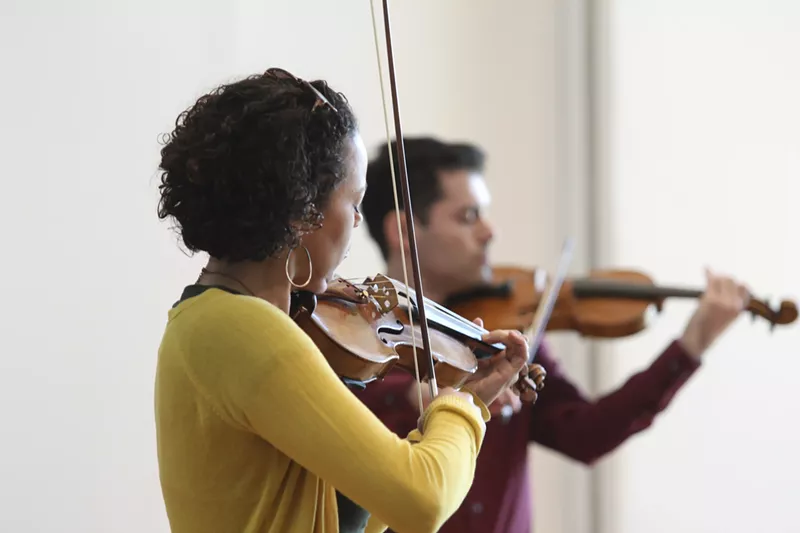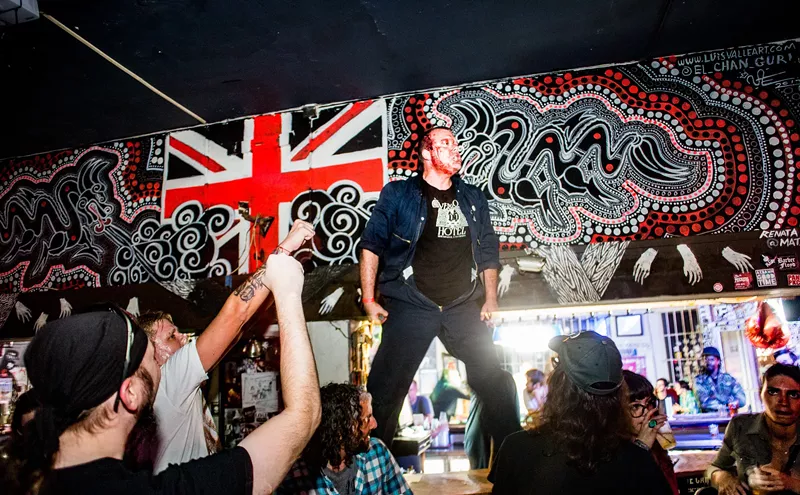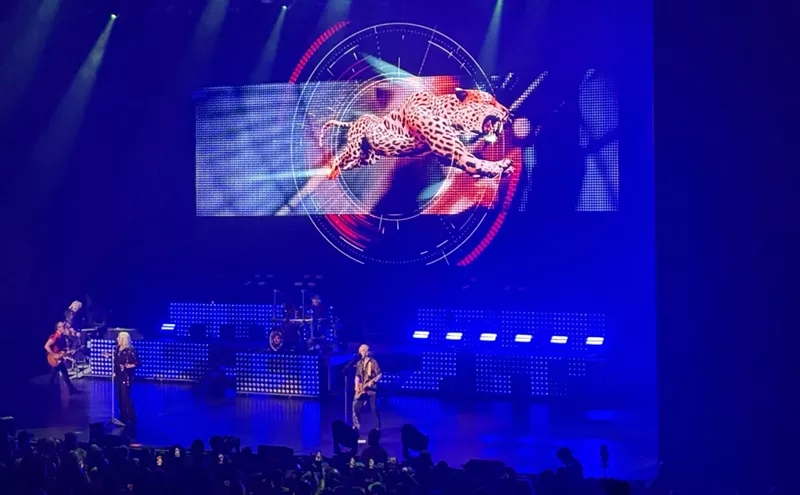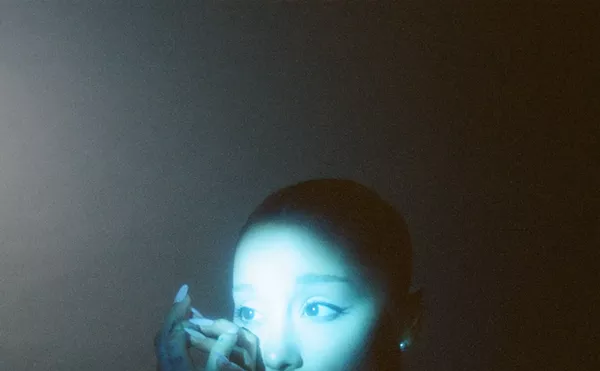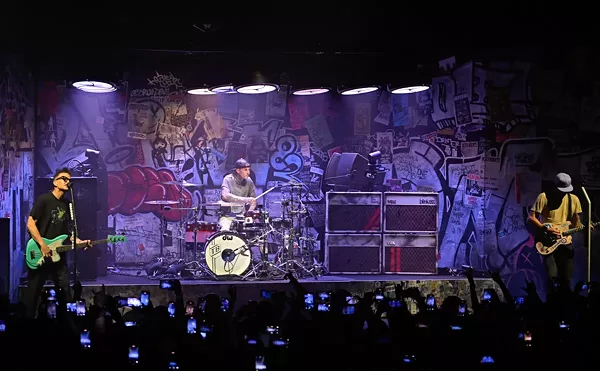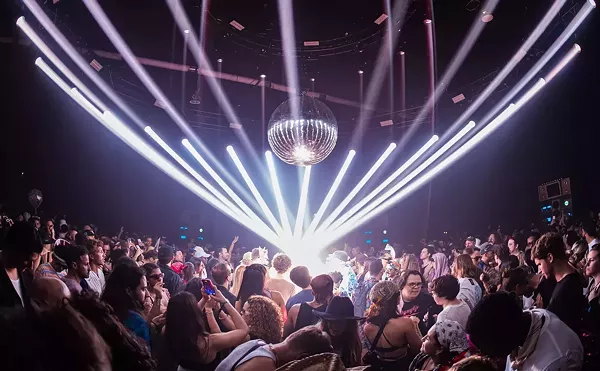On a recent Wednesday morning at Miami Beach's Frank Gehry-designed New World Center, a group of 18 string musicians has gathered for a three-day intensive of lessons, mock auditions, and performance psychology seminars. After a welcome breakfast and staff introductions, JT Kane, New World Symphony's dean of visiting faculty and orchestra manager, leads participants on a brief tour of the building where they will sharpen their talents over the next few days. They'll sleep in dorm-style living quarters typically reserved for New World Symphony fellows during the program.
The participating musicians have earned a spot at the inaugural National Alliance for Audition Support (NAAS) initiative, which aims to diversify American orchestras. A 2016 study showed that only 1.8 percent of the nation’s orchestra players are African-American and 2.5 percent are Latinx, making orchestras one of America’s least racially diverse institutions.
Kane continues the tour while the NAAS participants take selfies in the elevator, their instruments zipped and strapped to their backs. Some instrument cases are littered with bumper stickers. One of them reads "#DontBeBoring." As they enter the center's concert hall, they crane their necks and take in a 360-degree view of the performance space. Kane tells them about New World Center's state-of-the-art projection screens and hydraulic risers and then shows them where the curtains will be placed during their mock blind auditions.
It's standard fare for pre-professional classical musicians, but unlike other similar conferences, all of the participants at this seminar are black or Latinx. The participants were selected from the recent Sphinx Orchestral Partners Auditions — sponsored by the Detroit-based Sphinx Organization, which brings together orchestras that are interested in advancing diversity. NAAS is a partnership between Sphinx, the League of American Orchestras, and New World Symphony, and is made possible through the support of the Mellon Foundation. Organizers say future NAAS initiatives will widen application eligibility to recent conservatory graduates as well as early and midcareer professionals.
Johnnia Stigall, project manager at the Sphinx Organization, says conferences and audition intensives such as NAAS can feel like a "family reunion" for musicians of color who often feel isolated at status-quo institutions.
"I think it's always exciting to get to a conference and see people who look like you," NAAS participant Meredith Riley says. The 27-year-old violinist, who is biracial, recently earned a spot in the Richmond Symphony through a blind audition. She rattles off the names and instruments of the musicians of color in the ensemble as she counts them on one hand, and she says she's the only woman of color in the symphony.
Twenty-six-year-old violist William Neri became involved with the Sphinx Organization when he was a child. He says it has opened his eyes to the lack of diversity in the classical-music world. "I went to an audition, and after advancing in it, I looked around and I was like, I'm the only person of color in this room. I'd never noticed that before. So since then, I've really picked up on it, and I've been trying to find a way to encourage other people to get involved or try to see if there's more room for more people of color to be in those different scenarios."
Stigall points to a complex web of reasons for the lack of diversity in orchestral ensembles. Music education is not as accessible to kids in communities of color. "It's a pipeline issue," she says. "Even if you have the training and you get into university, sometimes you might need an instrument that can cost upwards of $20,000, so that can be the choice between an instrument or a car that can get you to auditions." She also points to what she refers to as personal cultural expectations. "I was a diversity fellow for an orchestra, and sometimes I felt like if I were to mess up, I wasn't just letting myself down; I was letting the whole community down. And I think it's really important to be able to connect with other musicians who get that too."

Audio By Carbonatix
[
{
"name": "GPT - Billboard - Slot Inline - Content - Labeled - No Desktop",
"component": "22004575",
"insertPoint": "2",
"requiredCountToDisplay": "2"
},{
"name": "STN Player - Float - Mobile Only ",
"component": "22595215",
"insertPoint": "2",
"requiredCountToDisplay": "2"
},{
"name": "Editor Picks",
"component": "17482312",
"insertPoint": "4",
"requiredCountToDisplay": "1"
},{
"name": "Inline Links",
"component": "18711090",
"insertPoint": "8th",
"startingPoint": 8,
"requiredCountToDisplay": "7",
"maxInsertions": 25
},{
"name": "GPT - 2x Rectangles Desktop, Tower on Mobile - Labeled",
"component": "23181625",
"insertPoint": "8th",
"startingPoint": 8,
"requiredCountToDisplay": "7",
"maxInsertions": 25
},{
"name": "Inline Links",
"component": "18711090",
"insertPoint": "8th",
"startingPoint": 12,
"requiredCountToDisplay": "11",
"maxInsertions": 25
},{
"name": "GPT - Leaderboard to Tower - Slot Auto-select - Labeled",
"component": "17720761",
"insertPoint": "8th",
"startingPoint": 12,
"requiredCountToDisplay": "11",
"maxInsertions": 25
}
]

